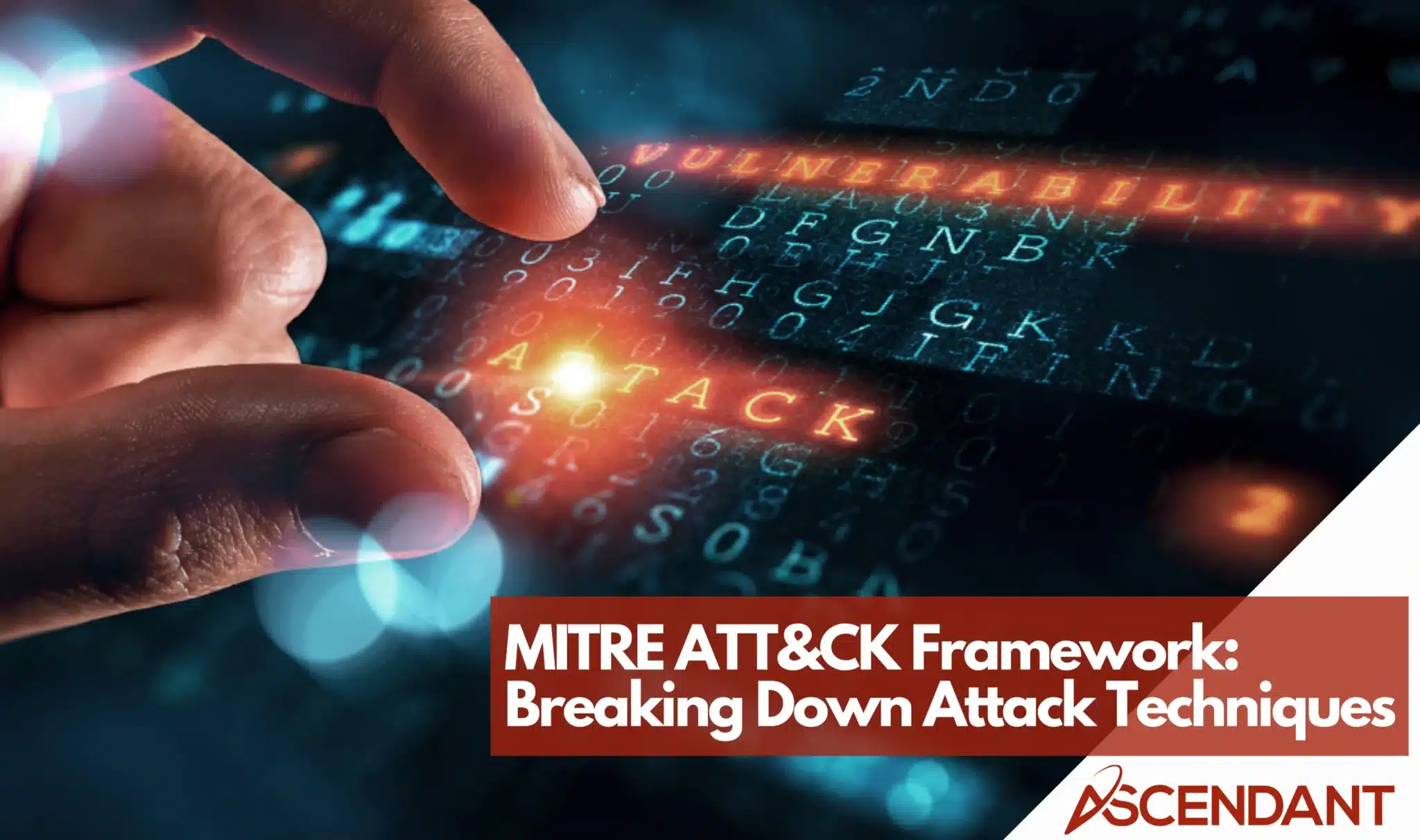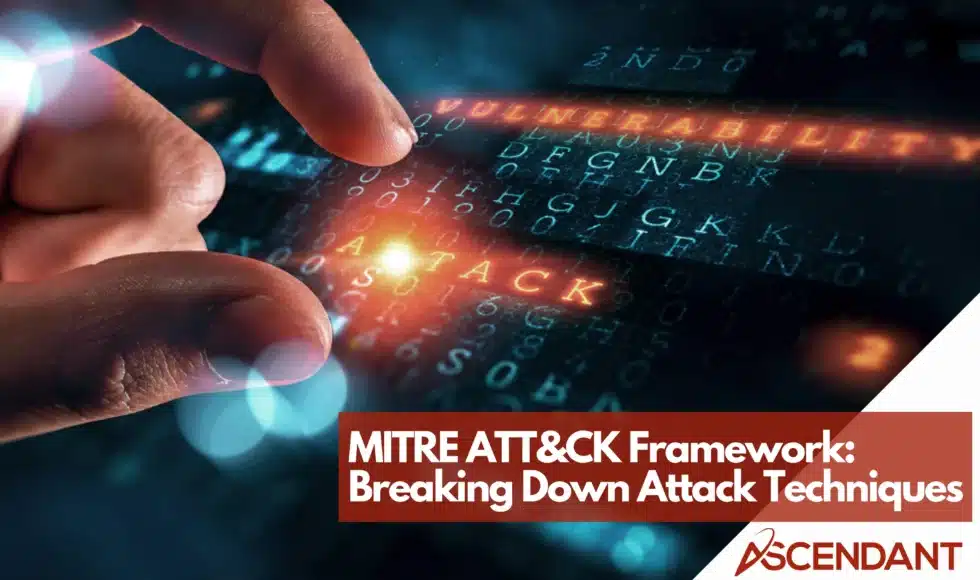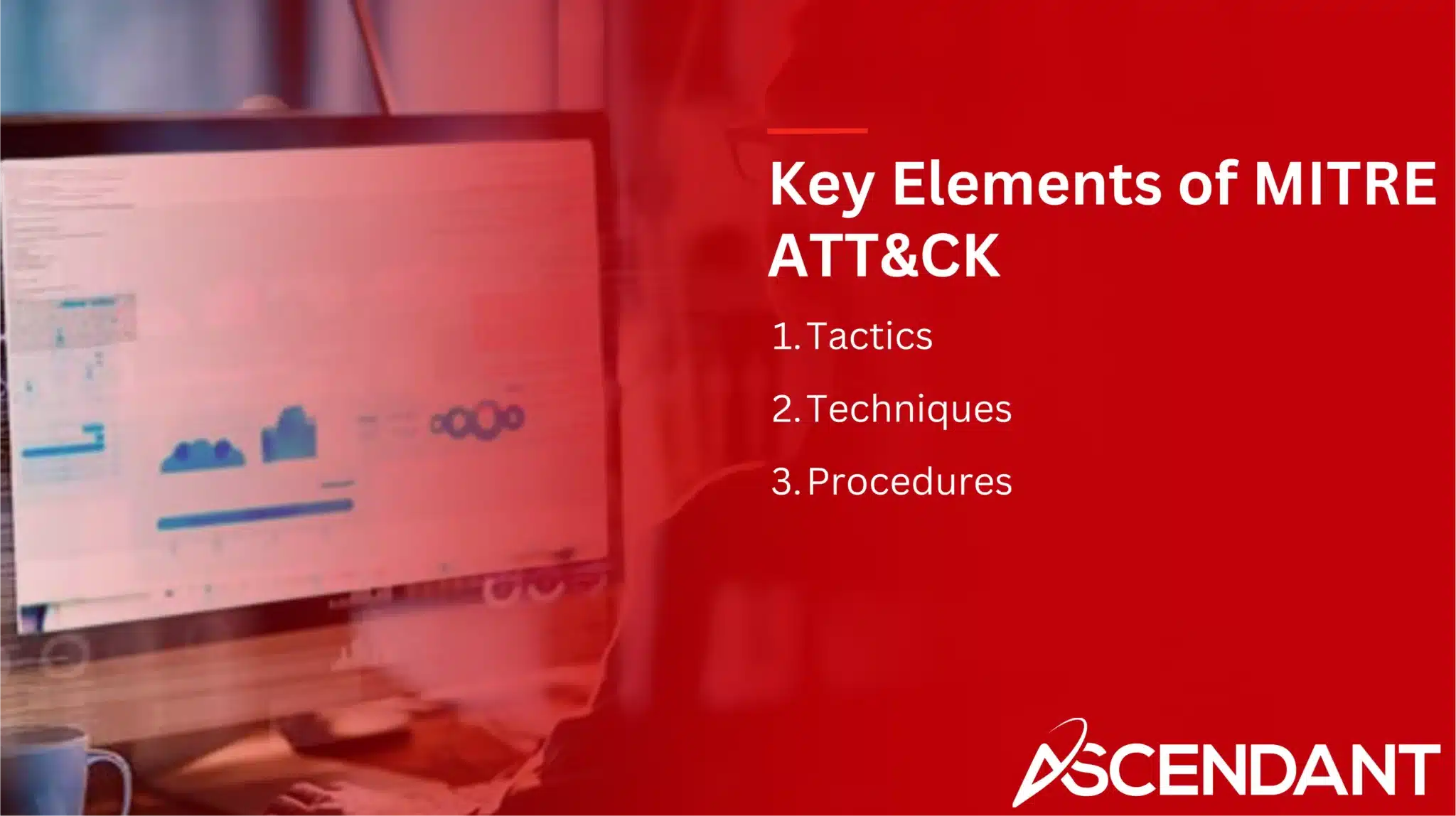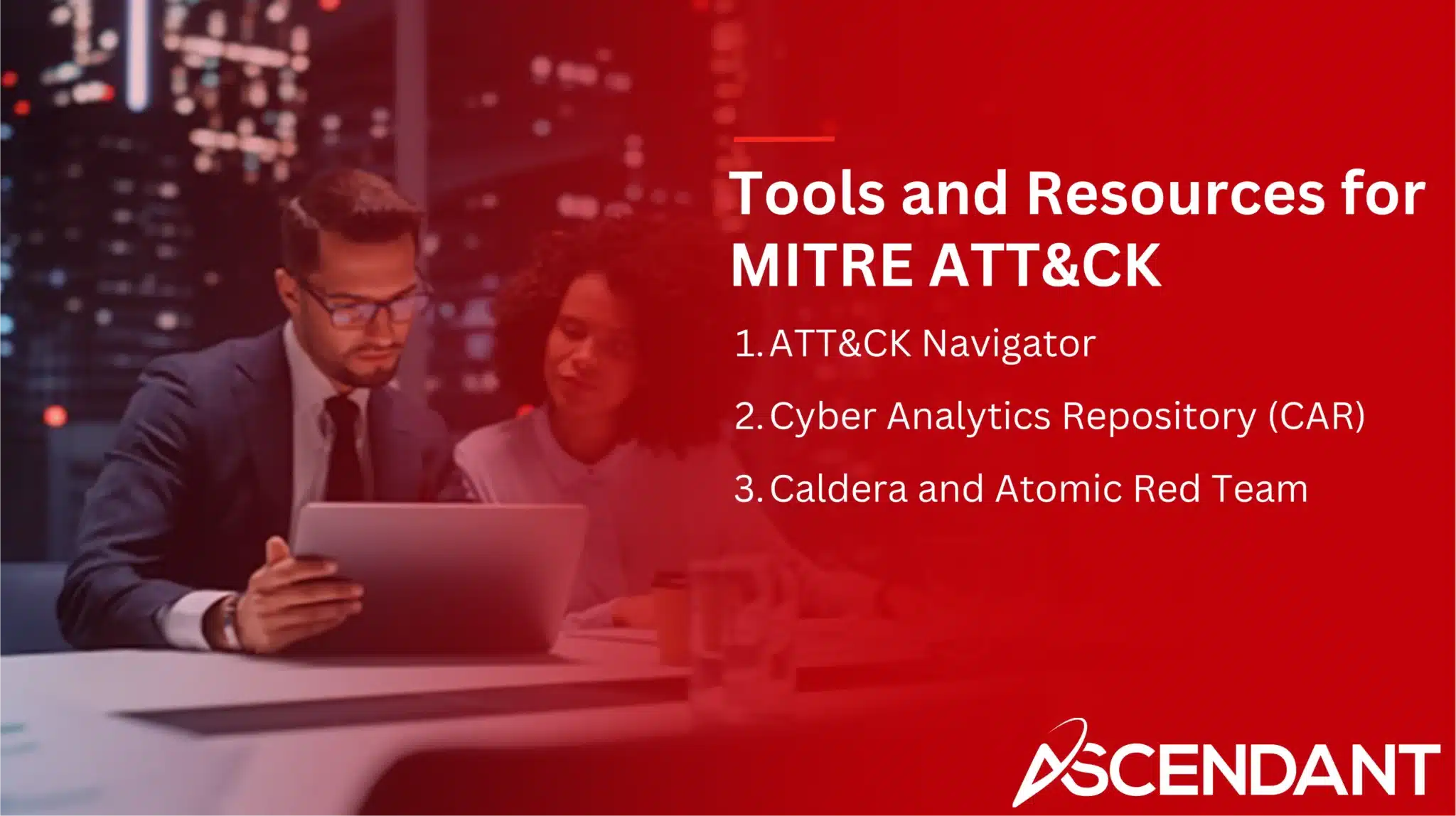The MITRE ATT&CK framework helps organizations understand and defend against cyber threats. It maps out tactics and techniques used by attackers. In this guide, we’ll explain what the framework is and how to use it for better cybersecurity.
In This Article:
- Understanding the MITRE ATT&CK Framework
- Key Elements of MITRE ATT&CK

- Exploring the ATTACK Matrices
- Practical Applications of MITRE ATTACK
- Tools and Resources for MITRE ATTACK
- Comparing MITRE ATTACK with Other Models
- Challenges and Best Practices
- Benefits of Implementing MITRE ATTACK
- MITRE ATTACK for CISOs
- History and Evolution of MITRE ATTACK
Key Takeaways
- The MITRE ATT&CK framework provides a structured approach to understanding adversary tactics and techniques, enhancing an organization’s ability to identify and mitigate cyber threats.
- Through detailed matrices for various environments, the framework assists cybersecurity professionals in analyzing threat behaviors and improving incident response strategies.
- Implementing the MITRE ATT&CK framework promotes a proactive cybersecurity culture, enhances threat intelligence sharing, and aligns security measures with broader organizational goals.
Understanding the MITRE ATT&CK Framework
The MITRE ATT&CK framework is a comprehensive guide that sheds light on the behavior patterns of cyber adversaries, detailing an array of strategies and techniques leveraged by attackers. This structured model aids in detecting and countering security threats effectively. It presents as a matrix with tactics delineated at its base while related techniques are enumerated above, each tactic denoting an objective pursued by an adversary throughout their attack campaign. Such configuration facilitates the interpretation of various attack methods as they transpire within actual incidents.
Released for public use in 2015, the MITRE ATT&CK framework has become widely available for organizations worldwide to bolster their cybersecurity defenses. Its application spans numerous environments like operating systems, software applications, network infrastructure components, and cloud-based services. The insights provided by this framework enable defenders to pinpoint vulnerabilities more accurately, comprehend established threat behaviors better and identify potential dangers with increased proficiency.
Key Elements of MITRE ATT&CK
The MITRE ATT&CK framework offers a robust and detailed view of an array of attack vectors for organizations, featuring multiple matrices tailored to various environments and threat landscapes. This structured approach to comprehending the tactics of adversaries is integral in conducting comprehensive threat analyses, rendering the framework a vital asset for those within the cybersecurity field.
Tactics
The adversarial tactics outlined in the MITRE ATT&CK framework serve as objectives that attackers strive to accomplish throughout an incursion. These tactics are pivotal for security teams, enabling them to pinpoint the precise methods used by assailants with aims including evading defenses, elevating privileges, and extracting data.
Recognizing these tactics is essential for crafting robust strategies aimed at detecting threats and mitigating their impact effectively.
Techniques
The MITRE ATT&CK framework outlines specific actions that adversaries carry out to fulfill their tactical goals. These techniques demonstrate the flexible nature of adversary tactics, as they can be utilized to achieve various objectives.
For every technique within the framework, there are actual case studies, signs of security breach (indicators of compromise), and strategies for prevention included. This assists in accurate detection and reaction to potential threats.
Procedures
The MITRE ATT&CK framework details procedures as the distinct methods that adversaries employ to carry out a technique or sub-technique. These procedures serve as tangible demonstrations of how techniques manifest in real-world attacks and are informative for those involved in security operations.
For instance, one such procedure could encompass the utilization of PowerShell for code injection into SQL.exe with the aim of credential dumping. This scenario exemplifies how various sub-techniques can be practically implemented together.
Exploring the ATT&CK Matrices
The MITRE ATT&CK framework acts as a publicly accessible knowledge base that catalogs adversary behavior, drawing from empirical evidence. It offers ATT&CK matrices which give comprehensive analysis of adversarial tactics and methods in diverse operational settings, aiding entities in bolstering their cyber defenses against advanced threats.
Enterprise Matrix
The Enterprise Matrix centers on the strategies and methods adversaries employ against systems such as Windows, macOS, and Linux. It presents 14 distinct tactics that play a crucial role in comprehending hostile activities, which helps organizations pinpoint weak spots, boost their ability to detect threats, and fortify their protective measures.
By providing knowledge about the nature of attacks as well as approaches for detection and mitigation, this matrix is instrumental in improving incident response efforts.
Mobile Matrix
The Mobile Matrix tackles issues associated with the exploitation of iOS and Android operating systems by categorizing particular tactics that attackers might employ to take advantage of vulnerabilities in mobile applications and these operating systems. It outlines 14 distinct strategies aimed at addressing threats to mobile devices, offering a systematic method for enhancing the security of such devices.
ICS Matrix
The ICS matrix is designed to highlight the tactics used by adversaries targeting critical infrastructure, with a concentration on securing operational technology. It details 12 specific tactics aimed at countering potential actions from adversaries within industrial control systems, in order to protect these vital environments from cyber threats.
Practical Applications of MITRE ATT&CK
The MITRE ATT&CK framework serves to strengthen threat intelligence, security operations, and the overarching security infrastructure of organizations. This framework is instrumental in enabling the regular assessment of security measures so that they can be adjusted to address new and developing threats.
It promotes the exchange of threat intelligence between organizations, which enhances cybersecurity efforts on a broader scale.
Threat Intelligence and Detection
Incorporating the MITRE ATT&CK framework into incident response procedures significantly improves the ability to detect and respond to cyber threats. This integration empowers security teams by enabling them to pinpoint and remediate vulnerabilities in their defenses, ultimately bolstering their threat detection proficiency.
For example, the ATT&CK Navigator serves as a tool for mapping out defense strategies against various techniques, offering crucial perspectives that aid security professionals in strengthening their protective measures.
Incident Response
Understanding the MITRE ATT&CK framework enables incident responders to more effectively pinpoint signs of an attack, which in turn expedites their response. This framework promotes enhanced teamwork among cyber defense teams when dealing with security incidents, allowing for quick and efficient threat neutralization.
This framework assists Chief Information Security Officers (CISOs) in recognizing adversary techniques that pose the greatest risk to their organization. This understanding enhances the development of forward-looking defense measures.
Adversary Emulation
Exercises that emulate adversary behavior replicate authentic cyberattacks to uncover vulnerabilities in security protocols. When these exercises are grounded in the MITRE ATT&CK framework, they enhance an organization’s defenses by reflecting actual cyber adversary tactics and behaviors.
Both Caldera and Atomic Red Team provide comprehensive tools for mimicking specific techniques used by adversaries. These resources play a crucial role in evaluating the resilience of the defenses established within a target network effectively.
Tools and Resources for MITRE ATT&CK
The MITRE ATT&CK framework encompasses various instruments and assets aimed at bolstering cyber defense capabilities, advancing comprehension of the framework, and enabling the execution of security tactics. Noteworthy among these tools are the ATT&CK Navigator and the MITRE Cyber Analytics Repository (CAR). Caldera and Atomic Red Team also form part of this ensemble.
ATT&CK Navigator
The ATT&CK Navigator serves as a visualization tool that enables the mapping and personalization of TTPs (Tactics, Techniques, and Procedures). To defensive strategies. It offers an explicit depiction of how ATT&CK techniques are covered defensively throughout the network infrastructure of an organization.
Cyber Analytics Repository (CAR)
The Cyber Analytics Repository presents a significant collection of analytics designed to advance the detection of attacks. By scrutinizing patterns and methods, it improves detection systems while offering cybersecurity experts a knowledge base that is accessible worldwide.
Caldera and Atomic Red Team
Caldera is a system that automates the emulation of adversarial actions to replicate the behavior of adversaries.
The Atomic Red Team offers a set of scripts aimed at executing distinct adversary techniques, which serve as essential tools for security teams.
Comparing MITRE ATT&CK with Other Models
The MITRE ATT&CK framework delivers a detailed and constantly refreshed perspective on TTPs, adapting to meet the challenges of emerging threats. It provides cybersecurity experts with an in-depth understanding of adversarial tactics that surpasses the depth offered by conventional models.
Cyber Kill Chain
While the Cyber Kill Chain model outlines a series of linear steps in an attack, MITRE AT&CK encompasses a wider array of tactics that also include post-exploitation activities. Due to its singular sequential approach, the Cyber Kill Chain is less effective at representing the complex strategies employed by sophisticated adversaries and falls short in illustrating contemporary cyber threats.
MITRE D3FEND Framework
The D3FEND framework from MITRE serves as an essential counterpart to the ATT&CK framework by focusing on defensive strategies against recognized attack methods. It advocates for a proactive stance in network defense through offering practical countermeasures, rendering it crucial for an inclusive security strategy alongside the ATT&CK framework.
Challenges and Best Practices
Incorporating the MITRE ATT&CK framework presents various hurdles that include the necessity of comprehensive training and specialized knowledge, to demanding a considerable investment of time and resources. The myriad combinations of data within the framework pose particular difficulties for entities attempting to match their current data adequately, especially when it comes to initial access tactics.
Nevertheless, collaboration with cybersecurity professionals for education and advice can notably mitigate these obstacles, facilitating a more efficient adoption process. By consistently refreshing incident response strategies with recent techniques from the MITRE ATT&CK framework, organizations are better equipped to anticipate and counteract new security threats.
Benefits of Implementing MITRE ATT&CK
The MITRE ATT&CK framework is applied worldwide in diverse fields ranging from the private sector to governmental bodies, aiming to bolster cybersecurity defenses. Openly accessible at no cost for all entities and persons, it encourages broad adoption and application. The basis of this framework lies in observations from real-world events, offering a tangible foundation for developing threat models and crafting defensive approaches.
Adopting the MITRE ATT&CK framework assists institutions in cultivating an anticipatory approach to cybersecurity matters while also establishing a shared terminology among experts. This common language improves joint efforts and comprehension within the field of cybersecurity.
MITRE ATT&CK for CISOs
The MITRE ATT&CK framework assists Chief Information Security Officers (CISOs) in establishing quantifiable security goals and helps to close the communication divide among team members with different levels of knowledge. By adopting this framework, CISOs can improve their incident response approaches, leading to rapid and effective elimination of threats.
It coordinates security measures with business aims, guaranteeing that cybersecurity tactics are in harmony with the objectives of the organization.
History and Evolution of MITRE ATT&CK
The MITRE ATT&CK framework was originally launched in May 2015 with nine tactics and 96 techniques. Over the years, it has evolved significantly, with major expansions in 2017 and 2018, introducing new tactics and techniques. As of April 2023, the framework includes 14 tactics and 196 techniques, with significant enhancements in detection guidance and sub-techniques.
This continuous evolution ensures that the framework remains relevant and effective in addressing modern cyber threats.
Summary
The MITRE ATT&CK framework is a powerful tool for understanding and mitigating cyber adversary tactics. By exploring its key elements, practical applications, and available resources, organizations can significantly enhance their cybersecurity posture. Implementing the framework not only improves threat detection and response but also fosters a proactive cybersecurity culture. As the cyber threat landscape continues to evolve, the MITRE ATT&CK framework remains an essential resource for security professionals worldwide.
 Frequently Asked Questions
Frequently Asked Questions
What is the MITRE framework?
The MITRE ATT&CK framework serves as a comprehensive knowledge base that details cyber adversary behaviors across the attack lifecycle and their targeted platforms.
It is an essential resource for understanding and defending against cyber threats.
What is the difference between NIST and MITRE?
The fundamental distinction between NIST and MITRE lies in the scope and intended recipients of their information. NIST provides wide-ranging counsel for organizations to handle cyber security risks, whereas the MITRE ATT&CK framework is tailored towards cybersecurity experts, concentrating on the strategies and methods used by adversaries.
Hence, while NIST presents an expansive structure for guidance, MITRE furnishes specialized knowledge aimed at bolstering defenses against digital threats.
What does MITRE stand for?
MITRE is not an acronym; it was created by James McCormack to be an evocative name without specific meaning.
What is the MITRE ATT&CK framework?
The MITRE ATT&CK framework provides a well-organized approach to comprehend and combat the tactics of cyber adversaries, thereby improving the detection and countermeasures against threats.
How can the MITRE ATT&CK framework help in threat detection?
The MITRE ATT&CK framework enhances threat detection by providing detailed insights into adversarial techniques and procedures, enabling security teams to identify and address vulnerabilities in their defenses effectively.
This targeted approach significantly improves overall threat detection capabilities.



